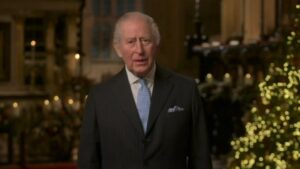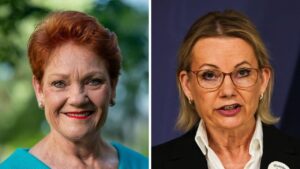
The New South Wales (NSW) government has intensified its efforts to combat the growing illicit tobacco trade, prompted by a significant increase in tobacco excise taxes. Premier Chris Minns highlighted that the public must accept the deployment of resources to address this issue, which has been exacerbated by what he described as a “gigantic” excise. This tax increase, implemented more than a decade ago, has led to a rise in illegal tobacco sales across Greater Sydney and regional areas.
In 2010, the tobacco tax excise surged by 25 percent following recommendations from the National Preventive Health Strategy Report. The goal was to generate additional funding for the Health and Hospitals Network Fund. Over ten years later, the NSW government has had to mobilize at least 40 health inspectors, supported by NSW Police, to tackle the booming illicit tobacco market.
Minns has consistently pointed to the excise as a primary factor driving the increase in illegal tobacco sales in NSW. He has urged Jim Chalmers, the federal Treasurer, to reconsider the excise program, but so far, the Albanese government has not responded to this request. When questioned about the fairness of the NSW government bearing the costs of enforcement while the federal government remains unyielding on tax adjustments, Minns remarked, “If I sent a bill to someone, who’d pay it?”
He emphasized the responsibility of NSW Police in addressing illegal activities, stating that the public must recognize that resources are being allocated to combat illicit tobacco sales that detract from police efforts to address more pressing issues like domestic violence and organized crime. “There’s going to have to be an opportunity cost here associated with a massive enforcement regime associated with tobacco,” he added.
In a recent operation, NSW Health closed two tobacco stores in St Leonards, marking the first enforcement actions under new legislative powers granted earlier this year. The closures, lasting 90 days, resulted in the seizure of 3,860 illicit cigarettes and 224 illegal vapes. Health officials have indicated that operations will expand to include Newcastle and other regional areas in the near future.
During a visit to one of the shuttered stores, NSW Health Minister Ryan Park criticized the excise, stating, “I’ll be clear about this: Where the excise has increased but the income for government has decreased, clearly it’s not working.” He pointed out that the disparities in pricing are significant, with legal tobacco often costing 50 to 70 percent more than illicit options. This situation drives law-abiding citizens to seek illegal alternatives for a product that is generally lawful.
Park has expressed his concerns about the excise at various health minister meetings and has reached out to the federal government, which has shown no willingness to amend the current tax structure. According to the Australian Taxation Office, approximately 25 percent of all tobacco sales in the 2023-24 financial year were illicit, leading to an estimated $3.2 billion in lost duty revenue and a net tax gap of 19.6 percent. The federal government is projected to collect $7.4 billion from the tax excise in the 2024-25 financial year.
Edward Jegasothy, a senior lecturer at the University of Sydney School of Public Health, noted the complexities surrounding the excise reform. He explained that the division of responsibility between state and federal governments means that states bear the costs of enforcement while the revenue benefits the federal government. Even if enforcement measures succeed in shutting down illegal operations, Jegasothy cautioned that the underlying issues, such as high cigarette prices and vaping bans, will persist.
He remarked, “If they could shut down retailers, there is every likelihood that it will switch to a more underground black market.” Jegasothy also pointed out that the enforcement strategy may not effectively reduce smoking rates, particularly among populations most severely affected by tobacco use.
Historically, Australia has imposed some form of excise on tobacco since the 1800s. Discussions about its role as a public health tool began gaining traction in the 2000s. In April 2010, a significant 25 percent increase in excise and customs duty raised the price of a pack of 30 cigarettes by approximately $2.20. Subsequent annual increases of up to 12 percent continued throughout the following decade, contributing to a marked rise in cigarette prices.
Data from the Australian Taxation Office showed that the cost of a 0.8g cigarette stick increased from about $0.47 in March 2015 to approximately $1.49 by September 2025. Jegasothy noted that the illicit tobacco market began to flourish around 2020, influenced by various factors including the COVID-19 pandemic, inflation, and the introduction of affordable disposable vapes.
The convergence of these elements created a fertile ground for the black market to expand. Jegasothy emphasized that while the high prices may have initially prompted illegal sales, the conditions necessary for a thriving black market were only established recently.
As the NSW government continues its battle against illicit tobacco, the challenges of enforcement and the implications of taxation remain at the forefront of public health discussions. The call for a reevaluation of the excise will likely persist as officials seek to find a balanced approach to managing tobacco consumption and protecting public health.






